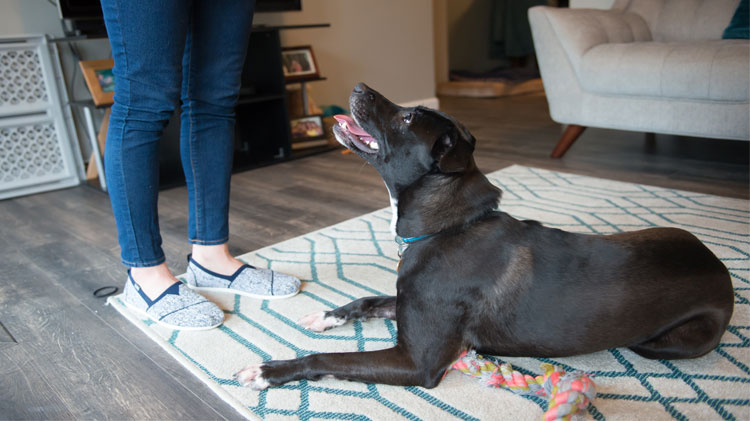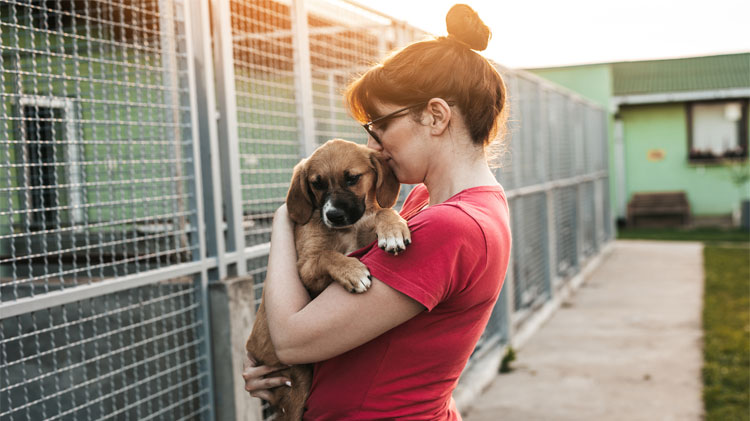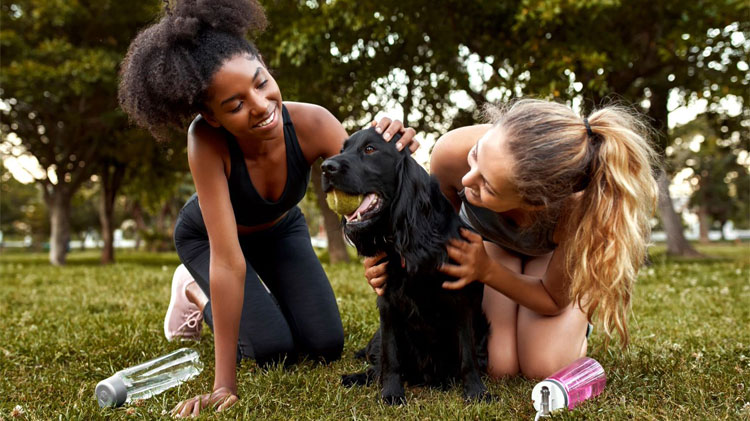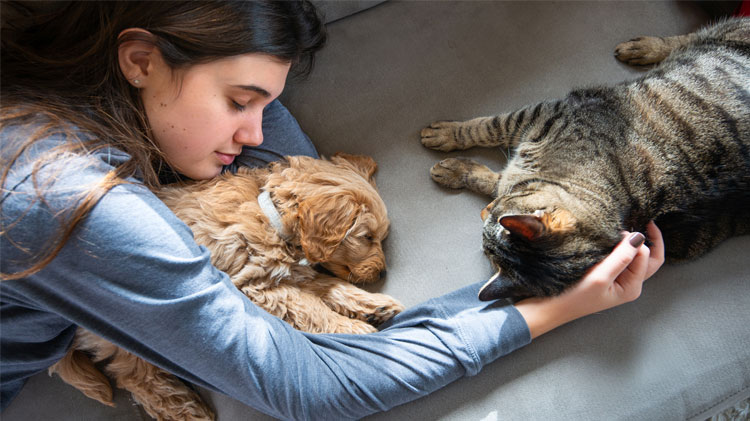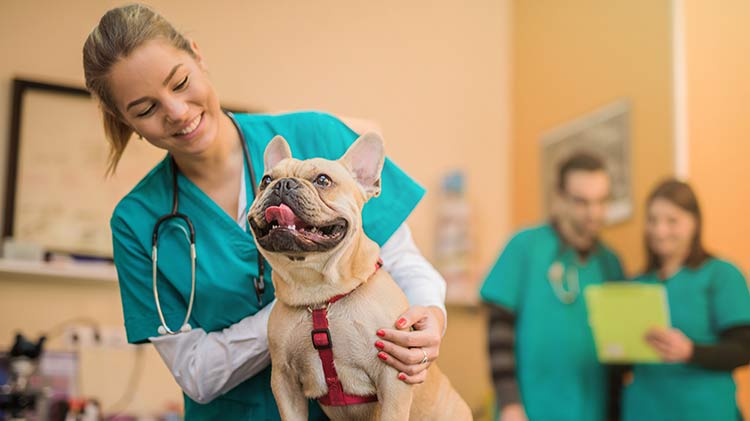How to help dogs with separation and anxiety
Learn about anxiety in dogs and how you can help your furry family member.
Back-to-school season is a busy and exciting time of year for many families, but the change can create anxiety for both people and pets alike. Our furry friends, in particular, can really struggle with the sudden absence of their human companions. As such, back-to-school blues and separation anxiety in dogs are common.
Knowing that your pet is suffering while you’re away from home can leave you feeling helpless and just as anxious. Fortunately, there are ways you can help your dog deal with separation anxiety and cope with changes in their routine.
What is separation anxiety in dogs?
In simple terms, separation anxiety is the fear of being left alone and the unknown that follows. Our pets live in the here and now, so when we leave, we could be gone forever as far as they know. But what distinguishes separation anxiety from general pet anxiety or boredom, is that it occurs as soon as you leave and can trigger intense, destructive and even dangerous behaviors.
The ideal way to help control separation anxiety is to try to prevent it from happening in the first place. But if you think your dog is suffering from separation anxiety, consult your veterinarian as soon as possible.
How is separation anxiety diagnosed?
Many behavioral issues are caused by something physical, like arthritis, dental pain or another underlying condition — and that constant pain can cause our pets to behave differently.
Step one for diagnosing any behavioral issue is a thorough physical examination of your dog by your veterinarian, which includes a review of your pet’s history and an in-depth conversation with you. If the exam doesn’t uncover any physical ailment that might be triggering your pet’s behavioral problem, then step two is determining whether it’s a training issue, a behavioral challenge or both.
Your veterinarian may recommend a simple training technique or refer you to a trainer or behaviorist. Other times, medical intervention is warranted. Either way, your veterinarian can help you understand which option makes the most sense for your dog.
What causes separation anxiety in dogs?
About 1 in 6 dogs suffer from separation anxiety, so it’s a common problem that many pet owners face. Unfortunately, it’s also a problem that often goes undiagnosed. Even though many pets with separation anxiety don’t go to the veterinarian for treatment, Trupanion has received more than 40,000 anxiety claims from dog owners since 2019.footnote 1
We’re still not sure what exactly causes separation anxiety in dogs, but it can be triggered or heightened by a sudden change in a dog’s routine. When the culprit isn’t something physical, the root cause likely comes down to a variety of factors, including temperament, genetics and the strength of the bond between dog and human.
Generally, any big transition or change can trigger a dog’s separation anxiety, such as:
- Family members returning to work or school
- Being adopted after spending time in a shelter or foster home
- Death of a family member or another pet
Early socialization may help prevent separation anxiety and other behavioral issues, but even the most well-socialized pups can experience separation anxiety down the road. It’s important not to blame yourself or wonder what you did wrong if your pet suffers from anxiety.
What are the signs of separation anxiety in dogs?
It’s natural for our pets to miss us while we’re away from home, but in some dogs, the stress of being alone can manifest in extreme and destructive ways. Not only can dogs with separation anxiety destroy the home, but they can also hurt themselves trying to escape.
Symptoms of separation anxiety in dogs can include:
- Excessive barking, howling or whining
- Trembling and shaking
- Panting and drooling
- Destructive chewing
- Scratching at doors or windows
- Loss of appetite or thirst
- Inappropriate urination or defecation
- Pacing and restlessness
- Attempting to escape
- Extreme excitement when their owner returns
If you're unsure if your dog is suffering from separation anxiety, talk to your veterinarian. Their expertise and guidance can help determine the best treatment for your furry friend.
Tips to help your dog with separation anxiety
Many pet owners dealing with this issue often ask, “Can a dog be trained out of separation anxiety?” Prevention is always better than trying to treat separation anxiety after it becomes a problem, as it can take a lot of time and patience. There’s also no one-size-fits-all solution. Every dog is different and may require a unique, multi-pronged approach.
As your family returns to work or school, here are some tips to help make the transition smoother for your dog:
- Ease your pet into their new routine by gradually increasing the amount of time you’re away.
- Keep goodbyes to a minimum. Giving your dog a ton of affection right before you walk out the door could leave them feeling anxious. Similarly, avoid showering your dog with attention as soon as you return. You don’t need to completely ignore your pet but try to keep comings and goings as calm as possible.
- Desensitize your dog to your departure clues, like putting on your shoes, grabbing your keys and putting on your coat. Practice these cues throughout the day without actually leaving. This can help keep your dog from panicking before you’ve even walked out the door.
- Tire out your dog with physical exercise and mental enrichment. A long walk with lots of sniffing, interactive toys and other forms of enrichment are some of the best tools for combatting separation anxiety.
- Play soothing music or white noise while you’re gone as a peaceful distraction.
- Try positive reinforcement training rather than punishing your dog. Punishment isn’t effective for treating separation anxiety and can make your dog’s anxiety worse.
Treating separation anxiety may take time
There’s probably nothing worse for a dog owner than seeing your pet suffer. If you’re concerned about your dog’s behavior and anxiety, talk with your veterinarian.
Dealing with separation anxiety requires patience and lots of love. By considering the tips above, following the expertise of your veterinarian and giving your pet time to adjust, you can help alleviate their stress and anxiety during the back-to-school season or any other time away from home.
Pet insurance that covers anxiety and more
More than half of pet owners underestimate the total lifetime cost of their pet, and veterinary care can be one of the most expensive but necessary costs. The good news is that pet insurance can help alleviate the financial impact of your pet’s veterinary care.
Trupanion offers high-quality coverage that helps protect both your finances and your pet’s well-being. A Trupanion policy helps cover everything from diagnostic testing and medications to hospitalizations for any new, unexpected illnesses or injuries.
You can also add extra protection with the Recovery and Complementary Care package. This optional rider offers coverage for alternative treatments that are outside of standard veterinary medicine, such as behavior modification, rehabilitative therapy, naturopathy and more!
Discover how Trupanion pet insurance can help protect your pet for life.
return to reference 1 Based on internal Trupanion data.
